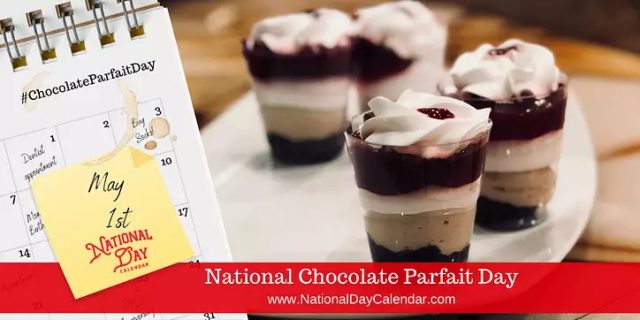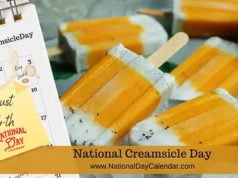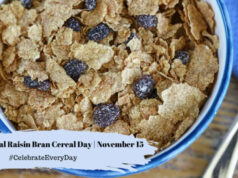
With layers of sweetness, May 1st ushers in National Chocolate Parfait Day.
Enjoying a delicious chocolate parfait would be a perfect way to end your day. Parfait literally means perfect in French! There are a couple of ways to make parfaits.
- The traditional French-style uses sugar syrup, eggs, and cream.
- The American style layers parfait cream, ice cream, and flavored gelatin in a tall, clear glass topped with whipped cream, fruit and liqueurs.
- The parfait has recently taken a wholesome turn using yogurt layered with nuts and fresh fruits, instead of ice cream and sugary syrups.
- Parfait refers to a frozen dessert made from a base of sugar syrup, egg, and cream. A parfait contains enough fat, sugar, alcohol and/or to a lesser extent air to allow it to be made by stirring infrequently while freezing, making it possible to create in a home kitchen without specialist equipment.
- Dark chocolate has more antioxidants than green tea and just as many as blueberries.
- White chocolate really isn’t chocolate. It’s made from cocoa butter, the substance you get by pressing cocoa beans. Cocoa butter is absent of the cocoa solids used to make chocolate.
- Chocolate was consumed by the ancient Aztecs as a frothy beverage, somewhat like hot chocolate we drink today.
- Chocolate comes from a plant, called Theobroma cacao, which translates “Food of the Gods”.
- Eating chocolate can also reduce the symptoms of stress.
- The oldest recipe with the name parfait comes from a French cookbook dated 1869. It was a frozen coffee-flavored French ice dessert constructed in parfait-shaped (tall and thin) ice cream molds.
- French style parfait is served on decorated plates instead of tall, thin glassware.
Sources:












